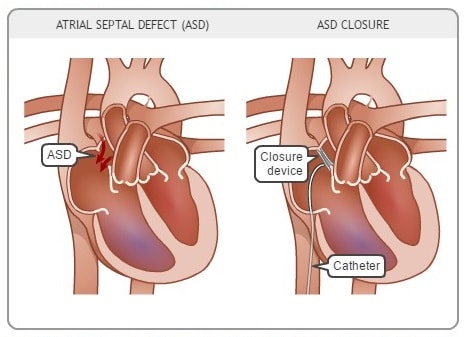Device Closure
An Atrial Septal Defect (ASD) is an opening or hole in the wall that separates the two upper chambers of the heart. This wall is called the atrial septum. The hole causes oxygen-rich blood to leak from the left side of the heart to the right side. This causes extra work for the right side of the heart, since more blood than necessary is flowing through the right ventricle to the lungs.
If the ASD is small enough, it can be closed with a special device. The procedure is done in the heart catheterization lab.
Types of Atrial Septal Defects :
Atrial Septal Defects are classified by where they occur and their size.

